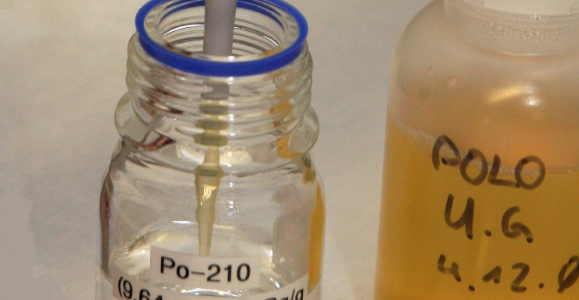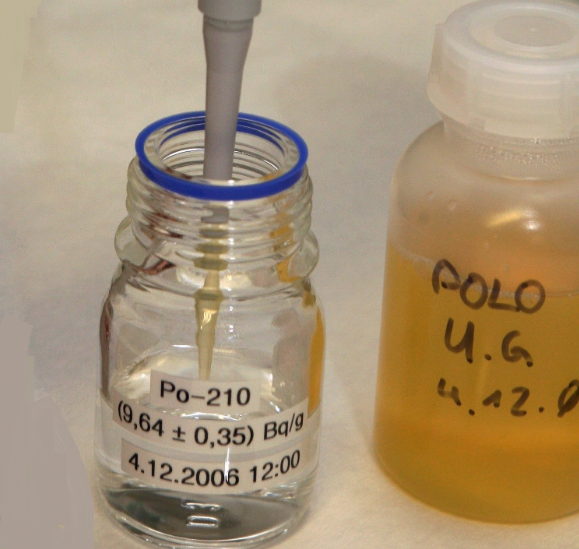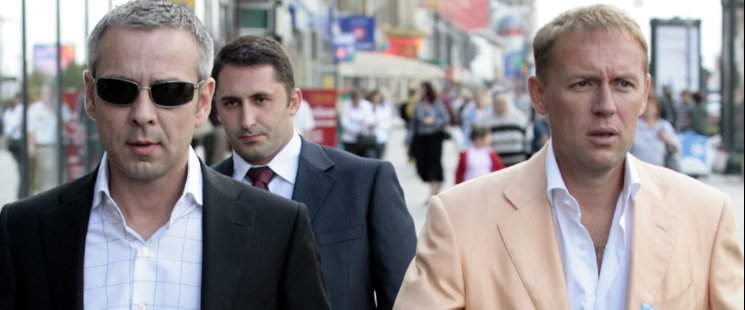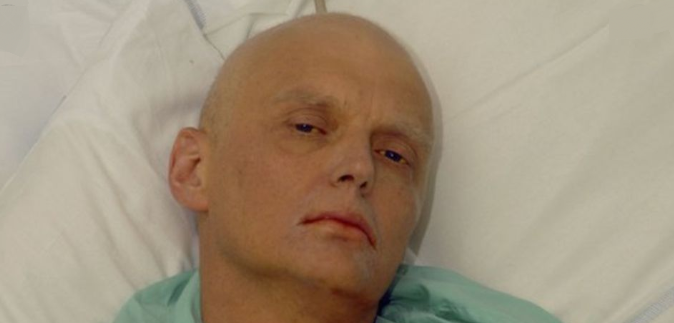
The Polonium affair



Never accept anything from strangers. One of the two men trendy dressed with a big gold watch on his wrist sitting at a table in a central London bar offered a cup of tea which he had bought earlier to another man former Russian agent Alexander Litvinenko, defecting to the West). He accepted the offer and took a couple of sips which tasted odd, and later they were joined by another man with a somber demeanor and the conversation turned to a meeting the group was due to have the next day with an international risk management company in London. The trendy dressed man’s family arrived upon which he said he had to leave- his group was due to watch a football match between Arsenal and CSKA Moscow that evening.
Just over three weeks after this meeting at the Pine Bar at the Millennium Hotel he was dead poisoned by radioactive polonium.
What was described as a precision nuclear attack on British soil unleashed an international scandal?
In 2016, a 10-year UK public inquiry concluded that in all probability the two men he met, Andrey Lugovoy and Dmitri Kovtun were Russian agents and in all likelihood assassinated Mr. Litvinenko with the knowledge of Russian President Vladimir Putin. Russia and both men have always denied culpability. This poisoning left hundreds of other affected also contaminated by the highly radioactive polonium that had been used in the killing, among them was Derek Conlon, a piano player in the bar of the Millennium Hotel whose life by chance linked to that of Mr. Litvinenko and whose story is now being told in a four-part Sky News podcast starting on Monday called Polonium and the Piano Player.
The source of the polonium is believed to be at Sarov, the headquarters of the former Soviet Scientific Research Institute of Experimental Physics, 230 miles east of Moscow nestling in flat woodland so dense it is impossible to see more than a few meters through the silver birch and pine trees, one of Russia’s close ghost town and the most secretive places in Russia. It is said barbed wire fences surround the entire area and all visitors even Russians have to submit to checks as they arrive.
It is thought that the polonium-210 which killed Alexander Litvinenko came from the facility, which is known in the West under the acronym VNIIEF. This rare radioactive metal is manufactured at a nuclear reactor elsewhere by bombarding bismuth-209 with neutrons but has to be extracted in the laboratories at VNIIEF. It is used commercially in minuscule amounts in devices that remove static from sensitive environments that must be kept dust-free, like silicon chip factories. One gram of this poisonous radioactive material is very volatile and said to be enough to kill 50 million people and make another 50 million sick. Polonium’s ionising radiation attacks soft tissue, destroying the cells, so that, in time as it spreads throughout the body it results in painful multiple organ failure. Although polonium is a solid metal at room temperature it is said to be soluble in water and so can be transported as a liquid and when it decays it breaks down with half its atoms switching to a different element every 140 days and eventually turning into lead.
The inquiry heard the polonium was transported to Moscow by train which is regularly inspected by guards, or flown to a military base in or around the capital from the small airport that is only used by government aircraft.
Another Theory relating how it could have got to London was relayed to the inquiry which heard claims that several weeks before the poisoning on 1 November 2006, a shipment of radioactive material was met in Austria, carried by a Chechen “freelancer” called Sultan, after being dispatched by the FSB, Russia’s successor spy service to the KGB.
The material which the claimant thought to be polonium was said to have been intended to be used in the “neutralisation” of members of the Chechen criminal groups.
The head of the inquiry Sir Robert Owen considered all evidence presented.
Ahead of first attempted poisoning, Lugovoy and Kovtun arrived in London on a Russian Transaero flight, having to come direct from Moscow. Police in their subsequent inquiry was never able to test the Transaero aircraft tail number EI-DDK734 for radiation as the plane was mysteriously withdrawn from service and the Russian authorities replied that they had carried out the tests which were negative.
Mr Litvnenko was working as a consultant for Erinys UK, in Mayfair, in the security industry, regularly compiling what is known as due diligence reports into the activities of firms other companies want to do business with.
On 16 October 2006m about two and a half hours after Lugovoy and Kovtun had checked into their Best Western Shaftesbury hotel in Shaftesbury Avenue, Mr. Litvinenko had a meeting at Erinys and took along both men to discuss a project that was being worked on. It was not until after police began their investigations that people in protective equipment visited the office of Erinys and discovered radiation so high it was concluded polonium must have been spilled on the table cloth.
Mr. Litvinenko and his two Russian associates then went to a branch of ITSu nearby. Secondary contamination of radiation was also found at the seats where they would have sat. That night <r Litvinenko was sick but his condition did not worsen.
The Best Western Shaftesbury Hotel where massive radiation readings were found in the bathroom sink and bin of room 107by the forensic experts.
Lugovoy and Kovtun returned to Moscow on another Transaero aircraft, registration number EI-DNM on 18 October, where British authorities managed to get access to that plane later and discovered secondary contamination in the seats they had been sitting in.
A week later, Lugovoy returned to London on his own, late at night, on a British Airways flight and checked into the Sheraton Hotel in Park Lane, Central London, just after midnight on 26 October, when he met Lugovoy met Mr. Litvinenko twice on subsequent days, in the Palm Court bar at the Sheraton.
He had Polonium at the hotel with him.
On 28 October, Lugovoy flew back to Moscow on another BA flight both planes were tested and found secondary contamination.
The poison’s arrival in London triggered off with dozens of locations being sealed off in one of the biggest health emergencies London has ever seen, as scientists in protective suits were sent in to conduct tests for alpha particle emissions in the restaurants, bars, bus stops and all over one of the busiest cities in the world.
Alexander Litvinenko, British naturalised Russian defector of the Russian FSB secret service who specialised in tackling organised crime assassinated on 23 November 2006 and buried at Highgate Cemetery, London.
